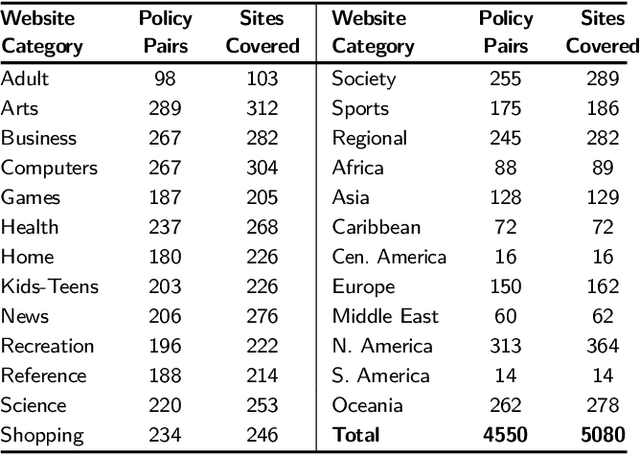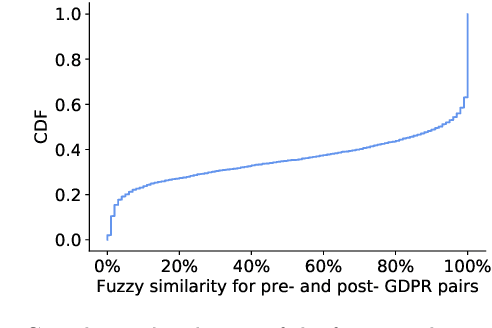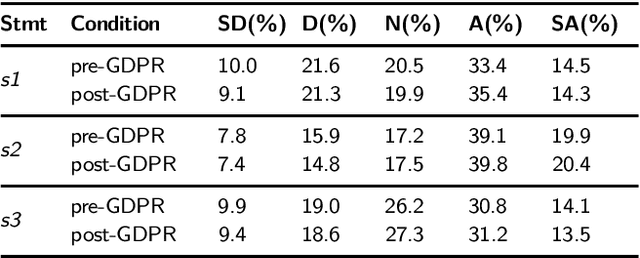The Privacy Policy Landscape After the GDPR
Paper and Code
Sep 22, 2018



Every new privacy regulation brings along the question of whether it results in improving the privacy for the users or whether it creates more barriers to understanding and exercising their rights. The EU General Data Protection Regulation (GDPR) is one of the most demanding and comprehensive privacy regulations of all time. Hence, a few months after it went into effect, it is natural to study its impact over the landscape of privacy policies online. In this work, we conduct the first longitudinal, in-depth, and at-scale assessment of privacy policies before and after the GDPR. We gauge the complete consumption cycle of these policies, from the first user impressions until the compliance assessment. We create a diverse corpus of 3,086 English-language privacy policies for which we fetch the pre-GPDR and the post-GDPR versions. Via a user study with 530 participants on Amazon Mturk, we discover that the visual presentation of privacy policies has slightly improved in limited data-sensitive categories in addition to the top European websites. We also find that the readability of privacy policies suffers under the GDPR, due to almost a 30% more sentences and words, despite the efforts to reduce the reliance on passive sentences. We further develop a new workflow for the automated assessment of requirements in privacy policies, building on automated natural language processing techniques. We find evidence for positive changes triggered by the GDPR, with the ambiguity level, averaged over 8 metrics, improving in over 20.5% of the policies. Finally, we show that privacy policies cover more data practices, particularly around data retention, user access rights, and specific audiences, and that an average of 15.2% of the policies improved across 8 compliance metrics. Our analysis, however, reveals a large gap that exists between the current status-quo and the ultimate goals of the GDPR.
 Add to Chrome
Add to Chrome Add to Firefox
Add to Firefox Add to Edge
Add to Edge